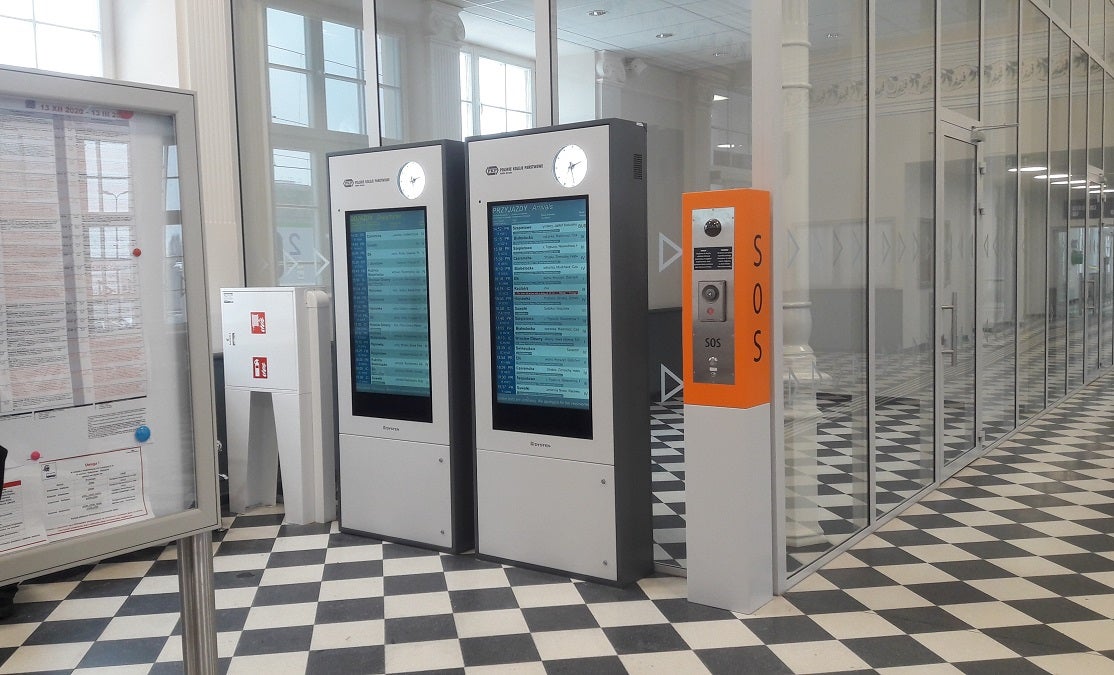
The EU has designated 2021 the “European Year of Railways” in an attempt to promote railway communication as a safe and sustainable mode of transport. Rail is ecologically friendly – only 0.4% of EU greenhouse gas emissions are generated by the rail transport sector. Rail is also the safest form of inland transport – 0, 1 fatalities per billion passengers/km.
Railway lines are being modernised, as well as new stations are being built, leading to the creation of faster and more convenient connections. What is more, old stations are being renovated and adapted to the needs of travellers.
DYSTEN also has a lot to do during the European Year of Railways. 2021 is largely oriented towards the production of equipment for projects related to the Modernisation of Railway Passenger Infrastructure. The company provides passenger information display systems (PIDS) and voice announcement systems for stations and stops of all types – premium, provincial, regional, agglomeration-based, tourist, and local ones. The most popular displays for larger stations are large departure/arrivals displays and info kiosks. Smaller stations opt for collective departure/arrival displays. Platform displays and info kiosks are installed on platforms more and more often. After the installation and commissioning of such devices, program integration with the central passenger information system of a given railway service provider takes place.
DYSTEN provides its services within the scope of national railway lines such as suburban lines, adapting the ordered devices to specific guidelines, operator’s regulations and even – to the parameters of a given location. However, the customisation of devices is not the only aspect that plays a big role in the modernisation of railway passenger infrastructure. Optimisation is also key when it comes to such projects. The railway communication is planned to be more environmentally friendly and energy-efficient. Therefore, DYSTEN has been developing solutions boosting the reliability of devices and reducing energy consumption. At the stage of consulting and passenger information system concept development, the company advises with regard to which technology to opt for so that it meets the investor’s expectations.
To meet the needs of clients, the company has conducted the study entitled “Comparison of luminance and power consumption measurements for LCD TFT and LED technology-based displays”. The examination has been carried out for the most frequently installed railway devices based on LED RGB and LCD TFT technologies to display various images. The test results will allow customers to determine which technology is optimal in terms of energy consumption and help estimate the energy consumption-related costs in the perspective of even several years of using a particular range of products. The summary also discusses the advantages of both technologies.
Currently, the company produces equipment for the E59 railway line, Poznan Główny – Szczecin Dąbie section – the project is co-financed from the European Union “Connecting Europe” (CEF) fund. These are mainly passenger information displays, train movement sensors, station clocks, and public address systems. The E59 railway line is a part of the international Baltic-Adriatic transport route. It is the shortest and most convenient connection between Scandinavia, Central and Eastern Europe, and the Balkans. The line in question is covered by the European Agreement on Main International Railway Lines (AGC), and is also part of the Trans-European Transport Network (TEN-T).

